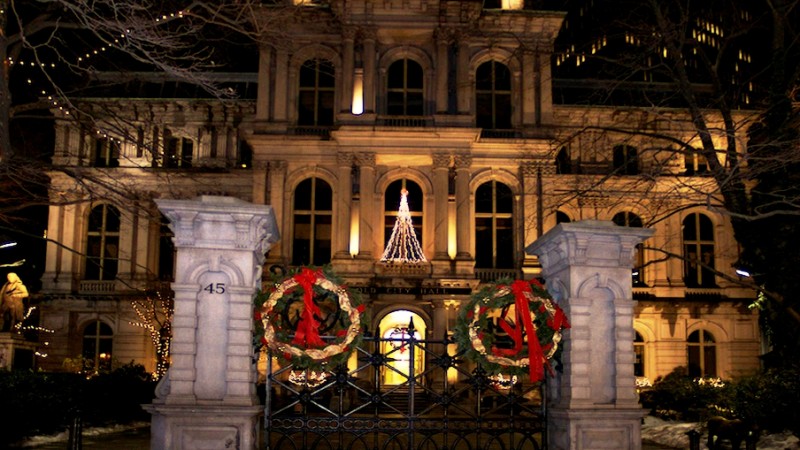Old City Hall
Categories: Historic & Cultural Attractions / Architecture
Hours
(hours vary according to tenant)
The Original Center Of Boston's Political Life Right In The Middle Of Downtown
Old City Hall is one of the first examples of adaptive reuse. In the 1960's the concept of recycling outdated public buildings was untried. The successful conversion (1969-1971) of Boston's City Hall into a restaurant and first-class office building heralded the beginning of this new concept. It was widely publicized by the American Institute of Architects and became a model of successful redevelopment for underutilized municipal property. Old City Hall became an example, stimulating the reuse of landmark buildings across the United States in the 1970's and 1980's, and this pioneer rehabilitation continues to win recognition.
This site was the location of two Boston City Halls. Here in 1810, the Suffolk Country Courthouse was erected. In 1841, that courthouse was converted to Boston's second city hall. In 1865 it was replaced by Boston third city hall, the building you see today on School Street. In 1969, Boston built its fourth city hall at Government Center and vacated this site. Thirty-eight Boston mayors served their terms of office on School Street at this site over a period of one hundred and twenty-eight years. All twenty of the Democrat mayors adopted the donkey as their party's symbol, while only five of the ten Republican mayors utilized the elephant.
Boston's Old City Hall was one of the first buildings in the French Second Empire Style to be built in the United States and is now one of the few that survive. The design originated in France during the Second Empire (the reign of Emperor Napoleon III from 1852 to 1870). In Paris, this style gained popularity with the building of the new Louvre. After the completion of Boston's City Hall (1865), the French Second Empire Style was used extensively elsewhere in Boston and for many public buildings in the United States, such as the Executive Office Building in Washington D.C. as well as other city halls in Providence, Baltimore and Philadelphia.
